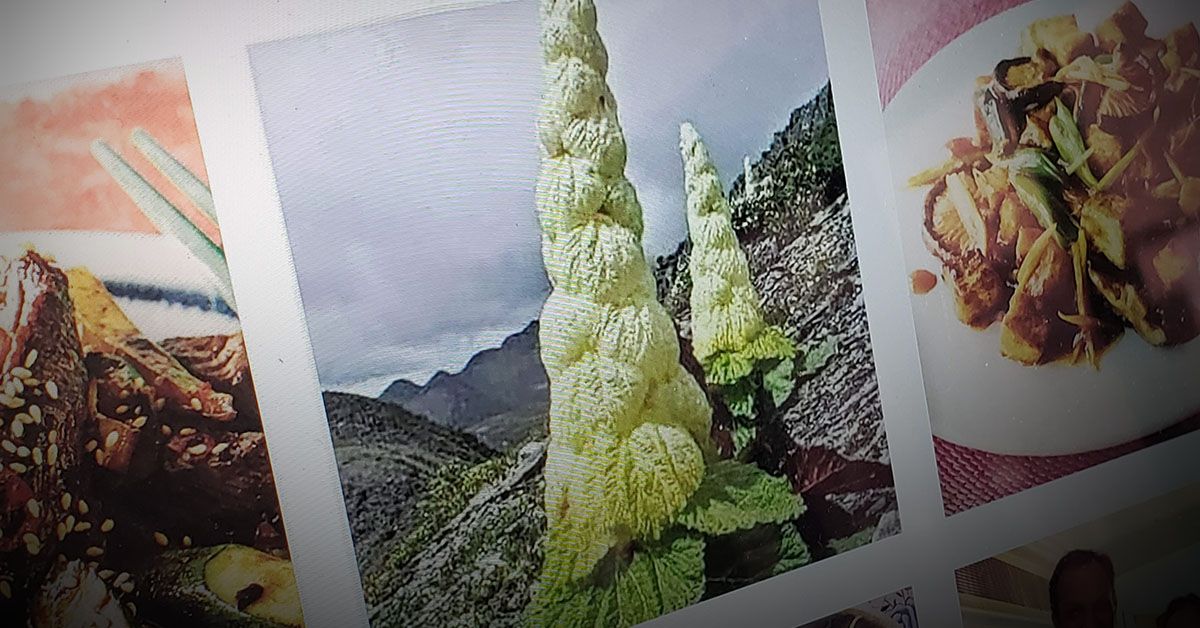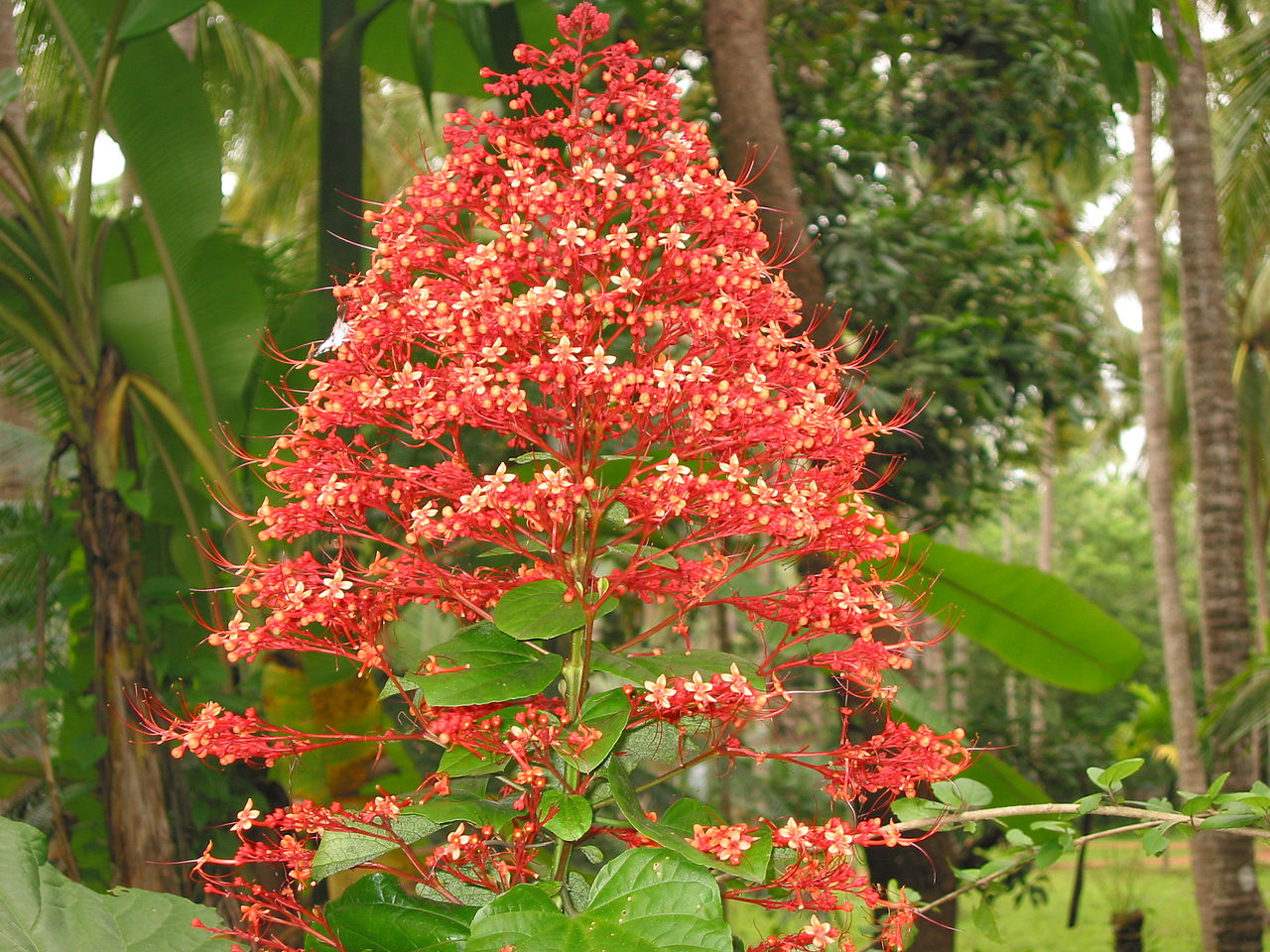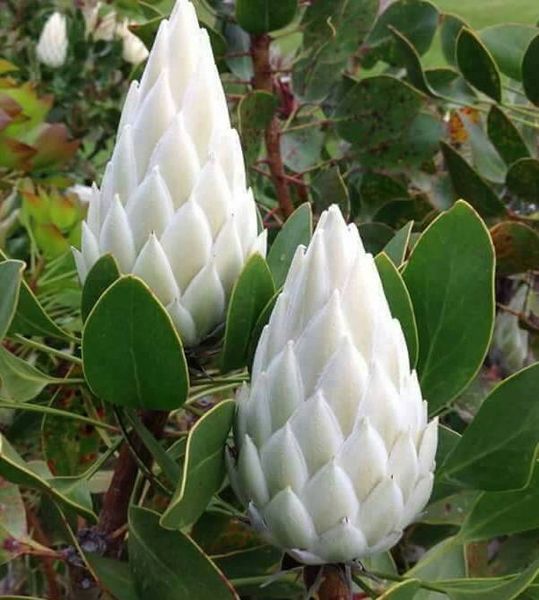A photograph supposedly showing a pagoda flower is frequently shared on social media along with the claim that it only blooms once every 400 years in the Himalayas:
View this post on Instagram
A post shared by Ching He Huang (@chinghehuang) on Oct 30, 2019 at 11:30am PDT
This picture does not show a pagoda flower (nor the "auspicious Mahameru flower") but rather a plant called the Rheum nobile. While this large plant is native to the Himalayas, it does not bloom once every 400 years.
The above-displayed photograph was taken by Martin Walsh near Daxue Mountain in Yunnan, China. We're not exactly sure when it was taken, but it was the featured picture for a 2011 newsletter from the Alpine Garden Society. The plant in the foreground is a Rheum nobile, which can grow to more than 1 meter tall, sitting next to its "cousin" plant, the Rhus delavayi, as explained by the Alpine Garden Society:
The scenically stunning Da Xue Shan (Big Snow Mountain) proved to be an absolute treasure house of gorgeous plants including meconopsis, lilies, fritillaries, incarvilleas, pedicularis, primulas, corydalis and others.
The most imposing was the amazing rhubarb, Rheum nobile (see front cover) dwarfing its cousin, R. delavayi, which stands at a mere 15cm. Among the corydalis, C. benecinta was outstanding and Martin"s lovely photo of Primula dryadifolia (see p.5) makes us wish we could grow it.
The Alpine Garden Society's Instagram page contains a few additional pictures of the Rheum nobile:
View this post on Instagram
A post shared by Alpine Garden Society (@alpinegardensociety) on Jul 9, 2019 at 2:30am PDT
View this post on Instagram
A post shared by Alpine Garden Society (@alpinegardensociety) on Jun 26, 2019 at 7:03am PDT
Interestingly, a plant called pagoda flower does exist. The flower (Clerodendrum paniculatum) is native to southeast China and produces huge spikes of coral-pink to reddish-orange, butterfly-shaped flowers that bloom from mid-summer well into fall every year, not every 400 years:
This is hardly the first time a rumor about a flower that only blooms once every 400 years in the Himalayas has circulated on social media. In 2018, a nearly verbatim copy of this text was attached to a different picture of a flower and given a different name. That variant claimed it was the "ahameru Pushpam," or arya pu, not the pagoda flower:
This is the flower which is known as "Mahameru Pushpam" or Arya Pu. It's seen in Himalaya. It flowers once in 400 years. If we wanted to see it again need to wait for another 400 years. So our generation is lucky. So please share maximum. Let others to see it.
Again, this photograph was mislabeled. It actually showed a Protea cynaroides, or the king protea, which grows in South Africa.
In September 2019, a nearly identical rumor was circulated about a "mahameru flower":
And once again, the picture was mislabeled. This photograph actually showed a species of cactus called Carnegiea gigantea.
In 2023, social media users saw a new spate of "pagoda flower" postings, in this instance accompanied by an image showing what appeared to be a tree vaguely resembling a fluffy, white weeping willow. We've not yet located the proper name for this tree, nor, indeed, can we confirm that the image is a real photograph (as opposed to one created using CGI (computer-generated imagery) or AI (artificial intelligence) software:
We also investigated a similar rumor back in 2016. That one focused on a flower supposedly called the "nagapushpa flower" and claimed that it bloomed once every 36 years. However, that rumor used a photograph of a marine invertebrate known as a sea pen.




